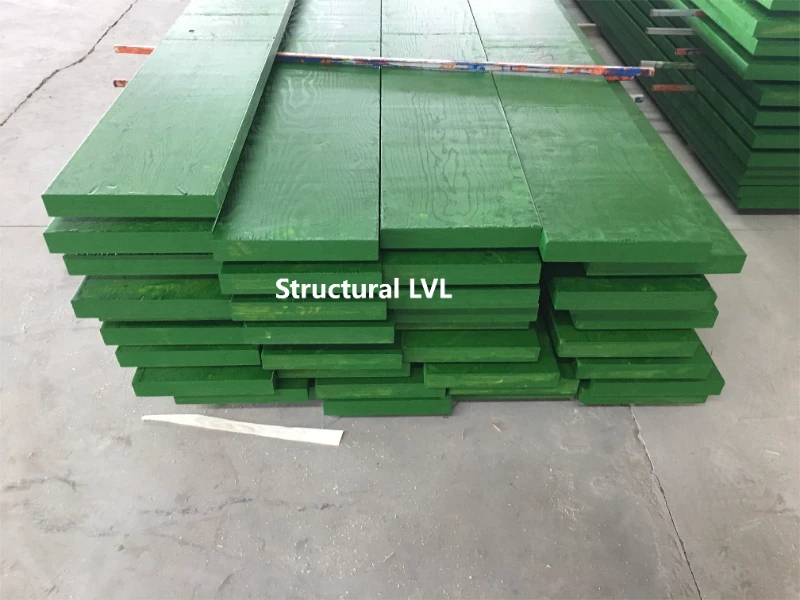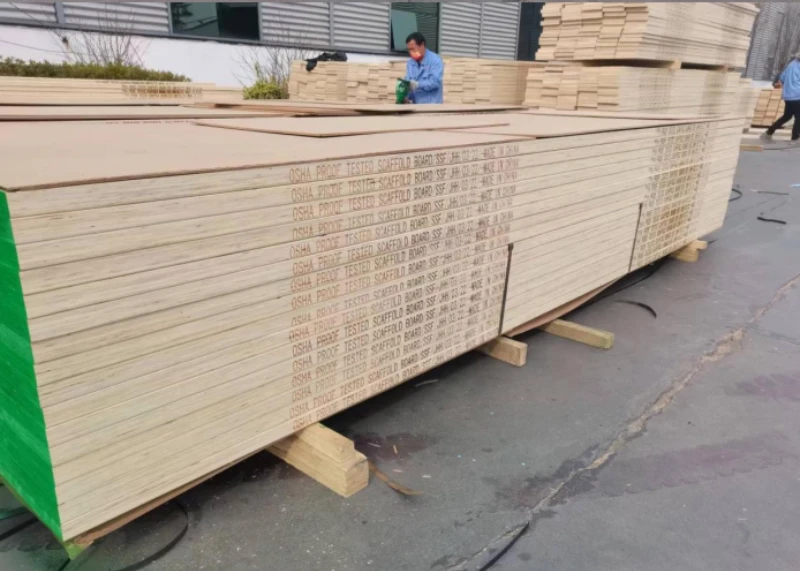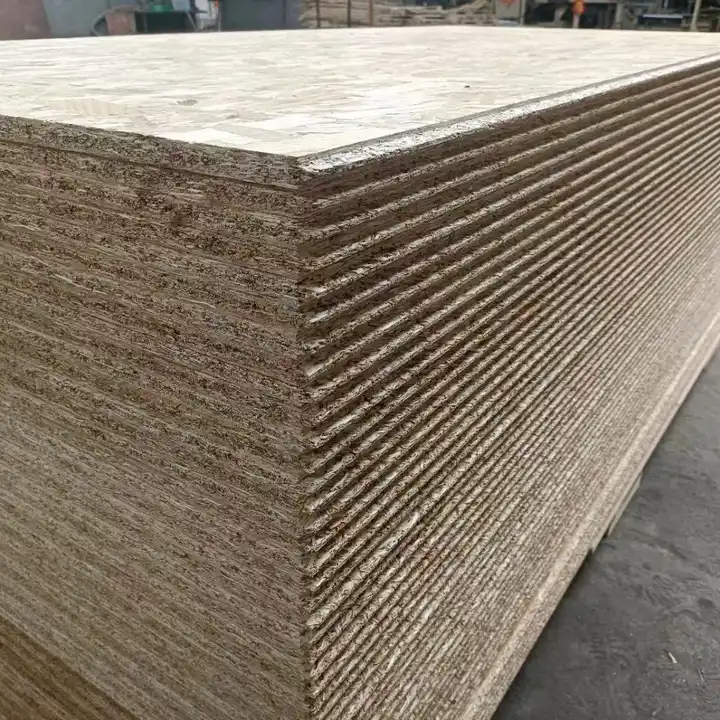Particle board is a cornerstone of modern construction and furniture manufacturing, offering a cost-effective alternative to solid wood and plywood. But what exactly is it, and is it the right choice for your projects? This article dives deep into the world of particle board, exploring its manufacturing process, various types, crucial advantages and disadvantages of particle, and how it stacks up against other wood products. Whether you're a procurement officer like Mark Thompson sourcing materials for large-scale projects or a furniture maker seeking budget-friendly options, understanding particle board's characteristics is essential for making informed decisions. We'll cover everything from its eco-friendly credentials to practical considerations like durability and finishing, helping you determine if this versatile engineered wood product meets your quality standards and application needs.
What Exactly is Particle Board and How is It Made?
Particle board is a type of engineered wood product manufactured from wood particles. Think of it as a composite material. The manufacturing process involves taking smaller pieces of wood – specifically wood chips, sawdust, shavings, and other wood waste generated by sawmill operations – and mixing them with a synthetic resin, typically urea-formaldehyde or melamine-formaldehyde. This mixture is then formed into large sheets.
The crucial step involves applying heat and pressure. This combination cures the resin, bonding the wood particles tightly together to form a dense, flat panel. The result is a rigid board with a relatively smooth surface, though often less smooth than Medium Density Fiberboard (MDF). This process allows particle board manufacturers like us at Jsylvl to utilize recycled wood resources effectively, transforming what might otherwise be waste into a valuable building material.
Understanding this process is key for buyers like Mark. The density of the board, the type of resin used, and the quality of the wood particles all influence the final properties – strength, moisture resistance, and suitability for various applications. Consistency in the manufacturing process is vital to ensure uniform quality batch after batch, a major concern for large-volume purchasers.

Are There Different Types of Particle Board Available?
Yes, particle board isn't a one-size-fits-all product. Different manufacturing techniques and additives result in various types of particle board, each suited for specific needs. Understanding these variations is crucial when specifying materials for projects.
Here are some common types of particle board:
- Standard Grade Particle Board: This is the most common and basic type, typically made with urea-formaldehyde resin. It's the most cost-effective option but has lower moisture resistance and strength compared to other types. It's often used for general furniture carcasses, shelving in dry environments, and underlayment.
- Moisture-Resistant (MR) Grade Particle Board: This type incorporates moisture-repellent resins (often melamine-urea formaldehyde) during manufacturing. While not waterproof, it offers better resistance to humidity and occasional spills, making it suitable for kitchen cabinet construction, bathroom vanities (away from direct water contact), and laundry room furniture. Look for MR grade markings.
- Fire-Retardant (FR) Grade Particle Board: Treated with fire-retardant chemicals during the manufacturing process, this particle board slows the spread of flames. It's specified for applications where building codes require enhanced fire performance, such as in public buildings, partitions, and certain types of commercial fixtures.
- Pre-Laminated Particle Board: This popular option comes with a decorative surface already applied. This surface can be a thin laminate (melamine-impregnated paper), wood veneer, or even printed paper foils. Pre-laminated particle boards save time and labor during furniture assembly as they don't require further finishing. They offer a wide range of colors, patterns, and wood-grain finishes.
- Cement-Bonded Particle Board: Instead of synthetic resin, this type uses Portland cement as a binder for the wood chips. This results in a board with excellent moisture and fire resistance, as well as good durability and resistance to insects and rot. It's heavier and often used for exterior applications, permanent formwork, and floor systems.
Knowing the specific requirements of your project—whether it's standard office furniture, moisture-prone areas, or applications needing specific finishes—helps in selecting the appropriate type of particle board.
What are the Key Advantages of Particle Board?
Particle board remains a popular choice in construction and furniture making for several compelling reasons. Understanding these advantages of particle board helps justify its selection, especially when budget and specific performance characteristics are key considerations.
- Affordability: This is arguably the most significant advantage. Particle board is considerably cheaper than solid wood and often less expensive than plywood or MDF. This cost-effective nature makes it ideal for large-scale projects, budget-conscious furniture lines, and applications where the premium cost of solid wood is unnecessary. For procurement officers like Mark, this affordability directly impacts project profitability.
- Eco-Friendly Aspects: As an engineered wood product, particle board is often made from recycled materials – specifically wood chips, sawdust, and shavings that are byproducts of other timber processing. This utilization of wood waste makes it a more sustainable option compared to harvesting virgin timber for solid wood. This aligns with growing demands for eco-friendly material choices and better resource management, contributing to sustainability.
- Smooth and Uniform Surface: Standard particle board typically has a very flat and smooth surface, free from the knots and grain variations found in solid wood. This makes it an excellent substrate for applying laminates, veneers, and paints, allowing for consistent and high-quality finishes in furniture and cabinetry. Pre-laminated versions capitalize on this, offering ready-to-use decorative surfaces.
- Dimensional Stability (in controlled environments): Compared to solid wood, particle board is generally less prone to warping or shrinking/swelling with minor changes in humidity, provided it's kept dry. Its engineered composition gives it greater dimensional stability in controlled environments.
- Versatility: Available in various densities, thicknesses, and grades (including moisture and fire-resistant options), particle board offers significant versatility. It can be easily cut, drilled, and machined, making it suitable for a wide range of non-structural and semi-structural various applications, from shelving and cabinet boxes to floor underlayment and decorative panels.
- Lightweight (compared to MDF): While density varies, particle board is often lighter than MDF of the same thickness, which can be an advantage in furniture assembly, handling, and shipping.
These benefits make particle board a practical and versatile and cost-effective material for many applications, particularly where cost, surface finish, and resource efficiency are primary drivers.

What are the Main Disadvantages of Particle Board I Should Consider?
While particle board offers compelling advantages, it's crucial to be aware of its limitations. Recognizing these disadvantages of particle board ensures it's used appropriately and potential issues are mitigated.
- Low Moisture Resistance: Standard particle board is highly susceptible to moisture damage. When exposed to water or high humidity, it tends to swell, warp, discolor, and lose structural integrity. The wood particles absorb water, causing irreversible damage, and it can even promote mold growth. This makes it unsuitable for exterior use or areas with frequent water contact unless it's a specific Moisture-Resistant (MR) grade, and even then, prolonged exposure should be avoided. This is a key pain point Mark Thompson would want to avoid through quality control.
- Lower Strength and Durability: Particle board is generally not as strong as solid wood or plywood. It has lower bending strength and impact resistance. Heavy loads can cause it to sag over time, especially in shelving applications over longer spans. Its durability is less than that of denser materials, making it more prone to chipping or breaking, particularly at the edges and corners.
- Poor Screw and Nail Holding: The composition of compressing wood particles means particle board doesn't hold screws and nails as securely as solid wood or plywood. Screws can strip easily if overtightened, and repeated assembly/disassembly can weaken the joints. Special coarse-threaded screws designed for particle board are recommended, and pilot holes are often necessary. This impacts furniture assembly and long-term structural integrity.
- Potential Formaldehyde Emissions: Traditionally, urea-formaldehyde resins were commonly used in particle board manufacturing. Formaldehyde is a volatile organic compound (VOC) that can off-gas, potentially affecting indoor air quality. While regulations (like CARB in the USA or E1/E0 standards in Europe/Asia) have significantly reduced permissible emission levels, it's still a factor to consider, especially for indoor applications. Always look for low-emission certified boards (E1, E0, CARB P2). Sourcing from reputable suppliers like Jsylvl who adhere to these standards is vital.
- Weight: Despite being lighter than MDF sometimes, high-density particle board can still be quite heavy, making handling and installation more laborious compared to some lower-density options or even some plywood.
- Difficulty in Repair and Refinishing: Damaged particle board is difficult to repair effectively. Gouges or chips are hard to fill seamlessly. Because it lacks natural wood grain, sanding and refinishing are generally not feasible, especially for pre-laminated surfaces. Painting or staining requires careful surface preparation and priming.
Understanding these drawbacks helps manage expectations and select particle board only for suitable interior and exterior (if specifically designed) applications where its limitations won't compromise performance or longevity.
How Does Particle Board Compare to Solid Wood, Plywood, and MDF?
Choosing the right panel product depends heavily on the specific application, budget, and desired performance characteristics. Here’s a comparative look at particle board versus solid wood, plywood, and Medium Density Fiberboard (MDF):
| Feature | Particle Board | Solid Wood | Plywood | MDF (Medium Density Fiberboard) |
|---|---|---|---|---|
| Composition | Wood particles (chips, sawdust) + resin | Natural timber | Thin wood veneers glued in layers (cross-grain) | Fine wood fibers + resin |
| Cost | Lowest | Highest | Moderate to High | Low to Moderate |
| Strength | Lower | High (varies by species) | High (good strength-to-weight ratio) | Moderate (uniform) |
| Moisture Resist. | Low (MR grade better) | Moderate (varies, requires sealing) | Moderate (Exterior grades better) | Low (MR grade better) |
| Surface Finish | Smooth, uniform (good for laminate/veneer) | Natural grain, knots (requires finishing) | Wood grain visible (can be smooth) | Very smooth, uniform (excellent for paint) |
| Screw Holding | Poor to Fair | Excellent | Good to Excellent | Fair to Good |
| Weight | Moderate to Heavy | Varies (can be lighter than dense panels) | Moderate | Heavy (dense) |
| Workability | Easily cut, machined; edges prone to chipping | Good (can be carved, shaped) | Good (resists splitting) | Excellent (cuts cleanly, good for routing) |
| Eco-Friendliness | Good (made from recycled wood waste) | Depends on sourcing (sustainability concerns) | Moderate (uses logs, but efficient) | Good (uses residual fibers) |
| Dimensional Stability | Good (in controlled environments) | Poor (prone to warp/swell) | Good | Very Good |
| Typical Uses | Furniture carcasses, shelving, underlayment | High-end furniture, structural framing | Structural panels, cabinet boxes, flooring | Cabinet doors, mouldings, painted furniture |
Key Takeaways from the Comparison:
- Particle board wins on affordability and utilizing recycled wood. Its weakness lies in moisture sensitivity and lower strength/durability compared to solid wood or plywood.
- Solid wood offers natural beauty and strength but comes at a higher cost and is less dimensionally stable.
- Plywood provides excellent structural strength and better moisture resistance than standard particle board, making it suitable for demanding applications like structural ply.
- MDF offers a superior surface for painting and routing compared to MDF's main competitor, particle board, but is typically heavier and also susceptible to moisture.
For buyers like Mark, the choice often involves balancing cost (particle board or MDF) versus performance (plywood or specific grades like F17 E14 LVL Structural timber for structural needs). Particle board is often the cost-effective option for non-load-bearing applications where a smooth surface for lamination is desired.
Is Particle Board Furniture a Durable Option?
The durability of particle board furniture is a common question, and the answer is nuanced: it depends heavily on the quality of the particle board, the construction methods used, the type of furniture, and how it's treated by the end-user.
Generally, particle board furniture is less durable than pieces made from solid wood or high-quality plywood. Its lower density and the nature of its composition make it more susceptible to damage from impacts, scratches, and particularly moisture. Edges and corners are vulnerable points that can chip or crumble if knocked. The lower screw-holding strength also means joints can loosen over time, especially if the furniture is moved frequently or subjected to stress.
However, this doesn't mean all particle board furniture is flimsy. Higher-density particle board offers better strength and screw retention. The use of quality hardware, proper joint construction (like dowels or cam locks in addition to screws), and protective edge banding significantly enhances durability. Furthermore, the surface finish plays a role; a tough laminate or veneer protects the core particle board from minor scratches and spills. Pre-laminated particle boards often provide a reasonably durable surface for everyday use in office furniture or home cabinetry.
Ultimately, particle board furniture represents a trade-off between cost and longevity. It's an excellent choice for furniture that is budget-friendly, intended for light to moderate use, and kept in controlled environments away from excessive moisture. For high-traffic items, pieces expected to last for generations, or furniture exposed to harsh conditions, investing in materials like solid wood or robust plywood might be more appropriate. For manufacturers, using high-quality particle board and sound construction techniques is key to producing reliable particle board furniture.

What About Pre-Laminated Particle Board? Is it Worth It?
Pre-laminated particle board, often referred to as melamine-faced chipboard (MFC) or LPL (Low-Pressure Laminate), is a highly popular variant, and for many applications, it offers significant advantages over raw particle board. Whether it's "worth it" depends on the specific project needs and priorities.
The core advantage of pre-laminated particle boards is efficiency. The decorative surface – typically a melamine-impregnated paper featuring a solid color, wood grain pattern, or other design – is fused directly onto the particle board core during manufacturing using heat and pressure. This eliminates the need for secondary finishing steps like painting or staining, or applying separate laminates or veneers onsite or in the workshop. This saves considerable time, labor, and material costs, streamlining the production of furniture and cabinetry.
Pre-laminated options provide a durable, scratch-resistant, and easy-to-clean surface suitable for many applications like kitchen cabinets, office furniture, shelving, and closet systems. The range of available decorative laminates is vast, allowing for diverse aesthetic choices without the complexities of finishing raw boards. The factory-applied laminate typically offers a consistent and high-quality finish.
However, there are considerations. While the laminate surface offers protection, the underlying particle board core retains its susceptibility to moisture if the edges aren't properly sealed or if the surface is deeply scratched or damaged. Repairing damaged laminated particle boards can be difficult, often requiring panel replacement. The aesthetic, while versatile, might not appeal to those seeking the natural depth and feel of real wood veneer or solid wood. The cost is higher than raw particle board, but often lower than buying raw board and laminating it separately.
For manufacturers focused on volume production, consistent finishes, and cost-efficiency in assembly, pre-laminated particle board is frequently the preferred choice. It simplifies the manufacturing process and delivers a ready-to-use panel optimized for modern furniture production.
Why is Particle Board Considered a Budget-Friendly and Eco-Friendly Material?
Particle board's reputation as both budget-friendly and eco-friendly stems directly from its composition and manufacturing process. These two characteristics are often key drivers for its selection in various industries.
From a cost perspective, the affordability of particle board is derived from its use of low-cost raw materials. Instead of requiring large, high-quality logs like solid wood or plywood, particle board is primarily made from wood chips, sawdust, shaving remnants, and other wood residues generated by sawmills and other wood processing operations. These materials are essentially wood waste byproducts, making them significantly cheaper than whole timber. The manufacturing process, while requiring investment in machinery, is highly efficient for mass production, further contributing to its status as a cost-effective option. This makes particle board significantly cheaper than solid wood and often more economical than plywood or MDF for comparable panel sizes.
The eco-friendly aspect is closely linked to this use of waste materials. By utilizing wood particles that might otherwise be burned or sent to landfill, particle board manufacturers promote resource efficiency and reduce the demand for virgin timber. Many high-quality particle boards incorporate a significant percentage of recycled wood content, both pre-consumer (industrial scraps) and sometimes post-consumer. This circular approach contributes to sustainability within the wood products industry. While the use of resins (especially those containing formaldehyde, though levels are now strictly regulated) is an environmental consideration, the overall impact of using recycled content often positions particle board as a relatively eco-friendly material compared to materials requiring extensive raw resource extraction.
Therefore, particle board offers a compelling combination: it helps manage project costs effectively due to its inherent affordability, and it supports environmental goals through the efficient use of recycled wood resources. This dual benefit makes it an attractive choice for cost-conscious and environmentally aware businesses.
What are the Best Applications for Particle Board?
Given its specific set of strengths and weaknesses, particle board is best suited for certain applications, primarily in interior design and manufacturing where cost-effectiveness and a smooth surface for finishing are prioritized, and where exposure to moisture and heavy structural loads is minimal.
Here are some common and appropriate various applications for particle board:
- Furniture Carcasses: It's widely used in furniture, particularly for the internal structures (carcasses) of cabinets, wardrobes, dressers, and bookcases where the surfaces will be covered or are not highly visible. Pre-laminated particle board is especially popular for this.
- Office Furniture: Desks, cubicle partitions, filing cabinets, and shelving units are frequently constructed using particle board, often with a durable laminate finish. Its affordability makes it ideal for large office fit-outs.
- Kitchen and Bathroom Cabinet Boxes: Moisture-Resistant (MR) grade particle board is commonly used for the boxes (carcasses) of kitchen and bathroom cabinets. While not suitable for countertops or areas with direct water contact, MR particle board handles the moderate humidity typically found in these rooms well, offering a cost-effective alternative to plywood.
- Shelving: For light to moderate loads, particle board is used for shelving in closets, pantries, and storage units. For longer spans or heavier items, thicker boards or additional supports are necessary to prevent sagging.
- Floor Underlayment: Particle board provides a smooth, flat surface over subfloors, making it suitable as an underlayment for carpets, laminate flooring, and sometimes vinyl flooring in dry areas. It helps to level imperfections and provide a uniform base. Care must be taken to avoid moisture. Using OSB like 4 × 8 osb board 15mm is often preferred for subflooring due to better moisture resistance and strength.
- Core Material for Doors: Lower density particle board is sometimes used as a core material for lightweight interior doors, particularly when faced with veneer or laminates.
- Commercial Fixtures and Displays: Retail displays, point-of-sale counters, and trade show booths often utilize particle board due to its cost and ease of fabrication into various shapes.
- DIY Projects: Its low cost and ease of cutting make particle board popular for various home DIY projects, such as simple furniture, organizers, or temporary structures.
It's generally not recommended for structural applications (framing, load-bearing walls), exterior uses (unless specifically designed, like cement-bonded types), high-moisture environments, or applications requiring high impact resistance or screw-holding strength without appropriate design considerations.

How Do I Ensure I'm Choosing High-Quality Particle Board?
For buyers like Mark Thompson, ensuring consistent quality is paramount when sourcing particle board, especially from overseas suppliers. Choosing particle board that meets project requirements involves looking beyond just the price tag. Here are key factors to consider for verifying quality:
- Supplier Reputation and Certifications: Partner with reputable particle board manufacturers like Jsylvl who have a track record of quality and consistency. Verify certifications relevant to your market and application. Key certifications include:
- Formaldehyde Emissions: CARB P2 (California Air Resources Board) for the US market, or E1/E0 standards (European norms) are crucial for indoor air quality. Request test reports.
- Quality Management: ISO 9001 certification indicates a structured approach to quality control.
- Sustainability: FSC (Forest Stewardship Council) or PEFC (Programme for the Endorsement of Forest Certification) if sustainable sourcing is required.
- Grade and Density: Specify the required grade (e.g., standard, MR) and density. Higher density generally correlates with better strength and screw holding but also means heavier weight. Ensure the supplier understands and can consistently meet these specifications. Standard densities range from around 600 to 750 kg/m³.
- Physical Inspection (Batch Testing): Implement a quality inspection process, either through your own team or a third-party service, before shipment. Key points to check:
- Dimensional Accuracy: Verify thickness, length, and width tolerances meet agreed-upon standards. Check for squareness.
- Surface Quality: Look for a smooth, uniform surface free of defects, voids, or soft spots. Check pre-laminated surfaces for consistent color/pattern and proper adhesion.
- Edge Quality: Edges should be clean-cut and solid, without excessive chipping or crumbling.
- Moisture Content: Use a moisture meter to check that the particle board meets the specified moisture content range (typically 6-10%). Incorrect moisture content is a major cause of warping and lamination issues.
- Internal Bond Strength: While harder to test onsite, this measures how well the wood particles are bonded together. Reputable manufacturers perform lab tests to ensure their product meets standards (like ANSI A208.1 in the US). Request test data if critical.
- Packaging and Handling: Ensure the particle board is properly packaged to protect corners and surfaces during transit and stored correctly to prevent moisture absorption or warping before use.
By focusing on supplier verification, clear specifications, and diligent quality checks, buyers can significantly reduce the risks associated with inconsistent quality and ensure they receive high-quality particle boards suitable for their design requirements.
Any Tips for Working with Particle Board Effectively?
Working with particle board requires slightly different techniques compared to solid wood or plywood to get the best results and avoid common frustrations like chipping or poor joints. Here are some practical tips:
- Cutting: Use sharp, high-tooth-count blades (carbide-tipped blades designed for sheet goods work best) on table saws or circular saws to minimize chipping, especially on laminated particle boards. Score the cut line first with a utility knife for critical cuts on laminated surfaces. Support the board fully during cutting to prevent vibration and breakage. Cutting slightly oversized and trimming to the final dimension can yield cleaner edges.
- Joining:
- Using Screws: Always drill pilot holes before inserting screws. The pilot hole should be slightly smaller than the screw's root diameter. Use coarse-threaded screws specifically designed for particle board as they provide better grip. Avoid overtightening, which can easily strip the hole. Don't place screws too close to the edge (at least 1 inch / 25mm is recommended) to prevent splitting.
- Glue: Standard wood glue works, but ensure good surface contact and apply adequate clamping pressure. Glue is often best used in conjunction with mechanical fasteners (screws, dowels).
- Dowels/Biscuits: These methods provide stronger joints than screws alone, especially for carcass construction.
- Edge Treatment: Cut edges of particle board are porous and unattractive. Apply edge banding (iron-on or self-adhesive veneer or PVC tape) for a finished look and to provide some protection against moisture and chipping. Solid wood edging can also be applied for greater durability.
- Finishing (Raw Particle Board):
- Sealing: Raw particle board is porous. Seal the surfaces and especially the edges thoroughly with a primer/sealer before painting or staining. Oil-based primers often work well to block moisture absorption.
- Painting: Apply multiple thin coats of paint rather than one thick coat for a smoother finish. Light sanding between coats (using fine-grit sandpaper) may be necessary.
- Staining: Staining particle board is generally not recommended as it lacks natural grain and absorbs stain unevenly, resulting in a blotchy appearance. A veneer finish is required for a natural wood look.
- Handling: Support particle board sheets adequately when moving and storing them to prevent sagging or breaking. Store sheets flat in a dry, controlled environment. Avoid dropping sheets or bumping corners.
- Safety: Always wear safety glasses and a dust mask when cutting or sanding particle board, as the fine dust and resin particles can be irritants.
By following these tips, you can work effectively with particle board, maximizing its benefits while mitigating its weaknesses, whether for large production runs or small DIY projects.
Key Takeaways on Particle Board:
To wrap up our exploration of particle board, here are the essential points to remember:
- Composition: Particle board is an engineered wood product made from wood chips, sawdust, and resin, compressed under heat and pressure.
- Core Advantage: Its primary benefit is affordability, making it a cost-effective material compared to solid wood or plywood.
- Eco-Friendly: It utilizes wood waste and recycled wood, contributing to sustainability.
- Surface: Offers a smooth surface ideal for laminates and veneers, especially in pre-laminated forms.
- Key Weakness: Highly susceptible to moisture damage unless it's an MR grade; edges require sealing/banding.
- Strength/Durability: Lower than solid wood or plywood; requires careful handling and appropriate use for non-structural applications.
- Workability: Easily cut but prone to chipping; requires specific techniques for joining (using screws) and finishing.
- Types: Available in standard, moisture-resistant (MR), fire-retardant (FR), and pre-laminated versions to suit different needs.
- Quality Control: Essential to check supplier certifications (especially formaldehyde emissions like CARB P2/E1/E0), density, dimensions, and moisture content.
- Best Uses: Ideal for furniture carcasses, office furniture, light shelving, cabinet boxes (MR grade), and floor underlayment in dry areas.
Understanding these advantages and disadvantages of particle board allows you to make informed decisions, ensuring you select the right material for your specific project needs and budget, achieving both cost efficiency and reliable performance. If you require high-quality engineered wood solutions, exploring options like structural LVL or dependable OSB boards might also be beneficial for more demanding applications. Feel free to reach out to us at Jsylvl to discuss your specific requirements.
Post time: Apr-08-2025




